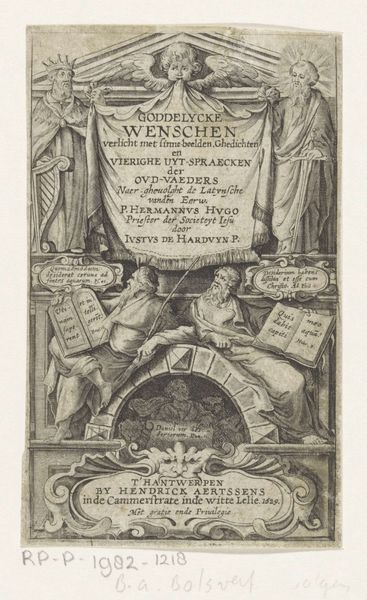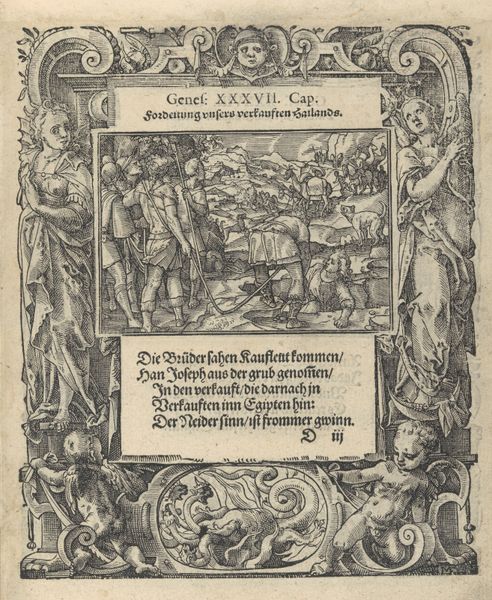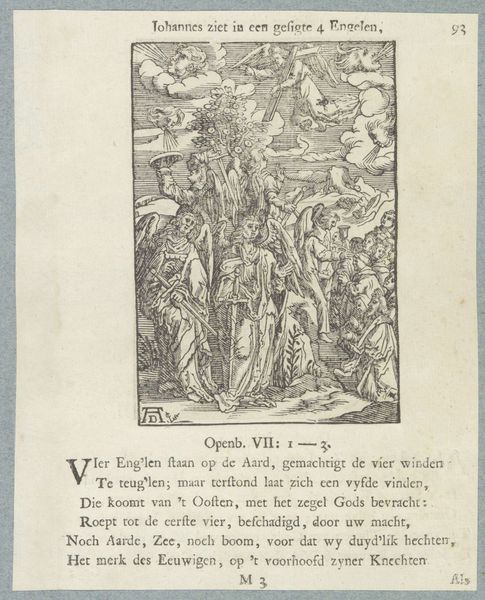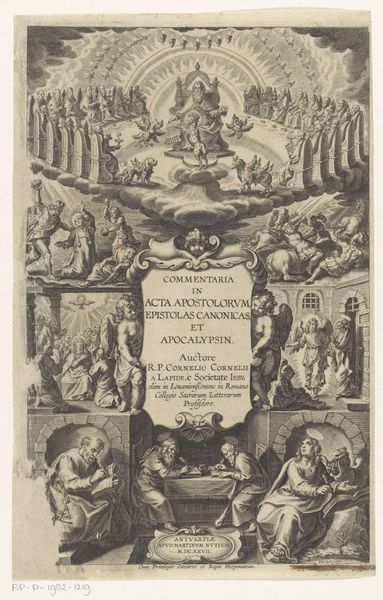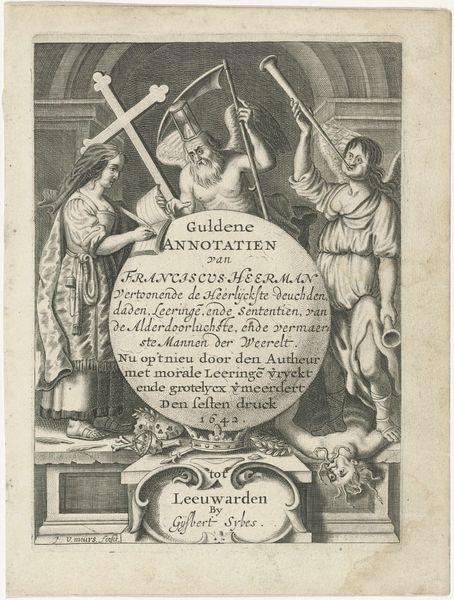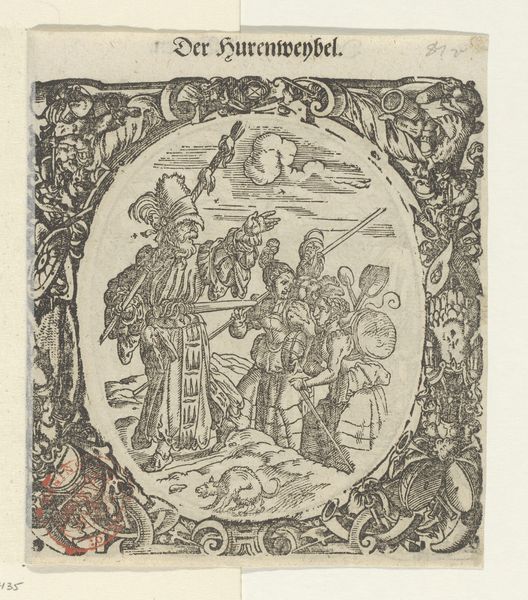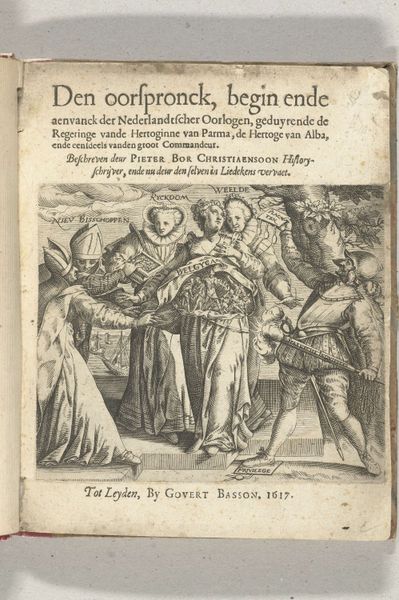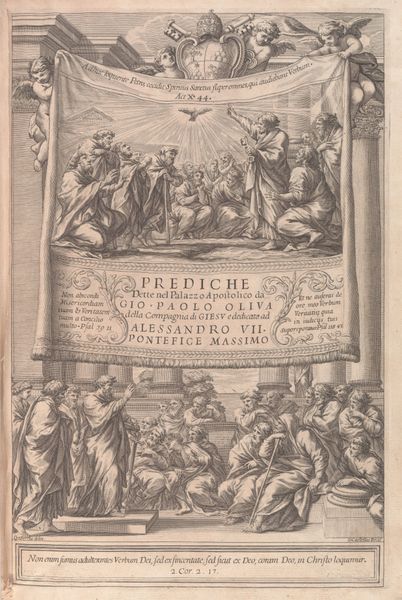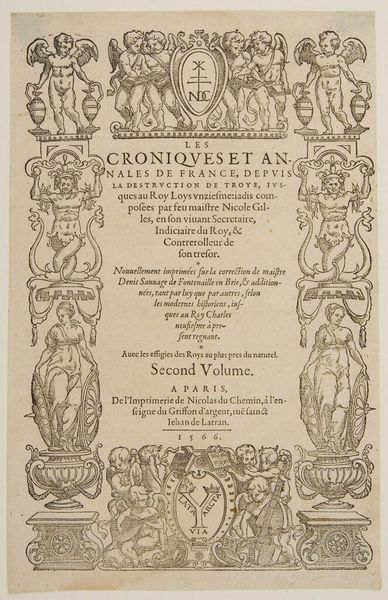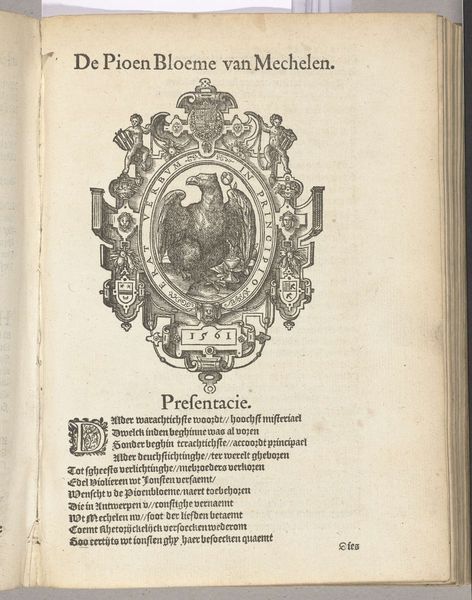
print, engraving
#
allegory
#
baroque
#
dutch-golden-age
# print
#
old engraving style
#
line
#
history-painting
#
engraving
Dimensions: height 138 mm, width 89 mm
Copyright: Rijks Museum: Open Domain
Curator: Looking at this print, "The Childhood of our Lord Jesus Christ," created in 1617 by Christoffel van Sichem, I immediately notice the almost oppressive weight of detail, a baroque characteristic that overloads the image. Editor: Yes, there’s certainly a density here. And all rendered in precise, unwavering lines. You know, my first reaction is the blatant attempt to normalize Christ's upbringing within a craft-oriented society. Curator: Exactly. The image frames the text with the tools of various trades. Notice the carpentry tools. It isn't just a religious allegory. Van Sichem subtly weaves in the societal fabric of the time. Look how craftsmanship, labour, and materiality are central. The choice of engraving as a medium is also telling – it speaks to wider dissemination and accessibility beyond the elite. Editor: And consider the societal function served by distributing printed imagery at this moment. Presenting Jesus’s youth amidst such symbols would strongly appeal to guild members. By directly associating labour and the divine in an increasingly urbanizing, proto-capitalist world, these prints encouraged pious industriousness among ordinary workers. Curator: Furthermore, there is an almost direct transfer of meaning occurring. Tools gain elevated significance by representing the material means necessary to literally produce society. A deliberate bridging of the spiritual with the workaday world through meticulous craft itself. Editor: It also suggests interesting avenues of class mobility and control, particularly if you unpack the layers of patriarchy implied. Who exactly benefits from all this godly encouragement to work, I wonder. But I find the overall composition strangely captivating in its fusion of religion, class, and making. Curator: For me, it reveals how meaning is encoded not just in iconography but within the labor and physical process involved in creating an object. The means and material, hand-tooled—central concerns. Editor: Agreed. And viewed through a contemporary lens, we’re compelled to interrogate how intertwined the socio-economic, the devotional and the power structures really were. Curator: Exactly, a potent reminder of material and social conditions encoded. Editor: A revealing artefact of faith, class, labor.
Comments
No comments
Be the first to comment and join the conversation on the ultimate creative platform.
